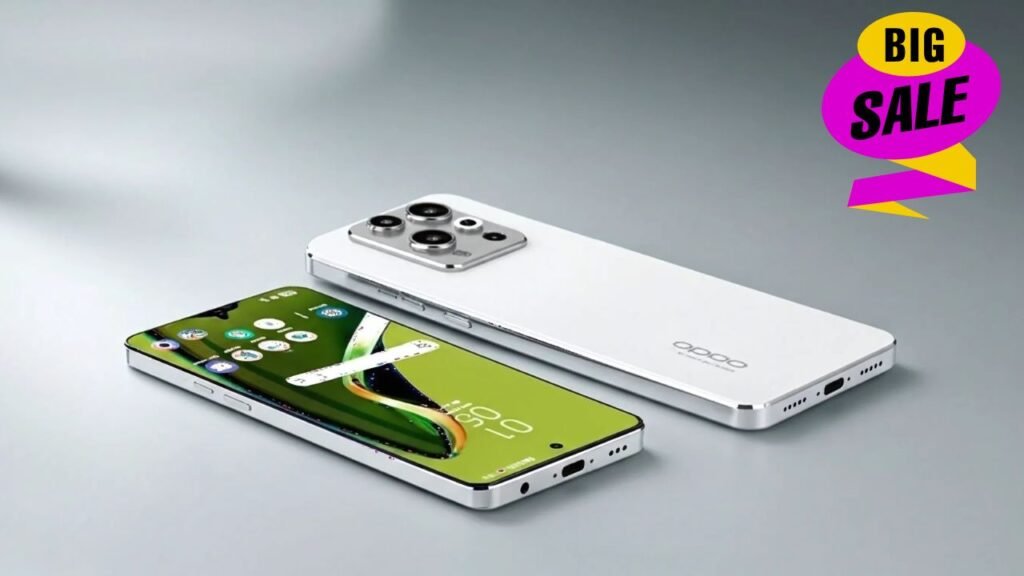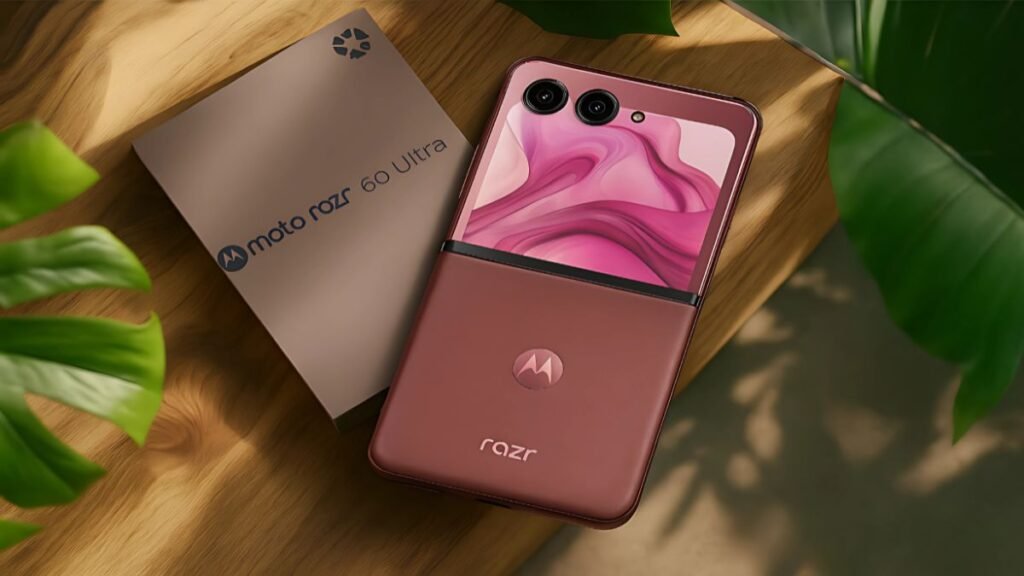Oppo A58 5G Launched: We’ve all been there—scrolling through specs, juggling prices, and wondering if the “latest launch” is actually worth it. With the Oppo A58 5G, we set the record straight. In this all-in-one guide, we walk through launch details, real-world features, region-to-region differences (yes, they matter), and how it stacks up in the crowded budget 5G lane. By the end, you’ll know exactly whether this phone fits your needs or if you should keep swiping.
Launch at a Glance: What “Launched” Really Means
Here’s the thing: Oppo A58 5G first appeared in late 2022 in China, featuring a Dimensity 700 chip, a 6.56-inch HD+ 90Hz display, dual rear cameras, and a 5,000mAh battery with 33W charging. That’s the baseline hardware most people refer to when they say “A58 5G launched.” In some global markets, you may also see an Oppo A58 (4G) with different specs but a similar name—confusing, right? We’ll clear this up below so you don’t buy the wrong variant. For the core 5G model’s initial spec set, think Dimensity 700 + 6.56″ 90Hz + 5000mAh + 33W—that’s the formula that made budget headlines and still holds up for everyday use today.
Key Specs in Plain English (So You Don’t Need a Decoder)
When we break the A58 5G down into everyday language, it looks like this: a dependable 5G phone for the basics—streaming, social, navigation, casual gaming—and a battery that goes the distance. The screen measures 6.56 inches with HD+ resolution and a smooth 90Hz refresh rate, so scrolling feels snappier than old-school 60Hz panels. Under the hood, MediaTek Dimensity 700 handles daily tasks without drama. The 5,000mAh battery and 33W SuperVOOC fast charging are the real workhorses, getting you through long days and back on the road in a quick coffee break. For photos, you’re looking at a 50MP main + 2MP depth pair on the back and an 8MP selfie up front—perfect for social sharing and everyday snaps. The phone originally shipped with Android 12/ColorOS in early markets and continues to be positioned as a practical daily driver.
Design & Build: Clean Lines, Pocket-Friendly, Everyday Tough
Design is where Oppo often over-delivers in the budget tier. The A58 5G keeps things minimal and modern with a flat-edged silhouette and dual circular camera housings that look pricier than the sticker. The phone feels balanced in the hand and slides neatly into pockets, even with a case. A slim body and light weight make it comfortable for long reading sessions or one-handed texting. Colorways vary by region, but the sleek black and lively gradient options stand out with a subtle shimmer that catches light without screaming for attention. It’s not a glass-and-metal flagship, but it looks tidy on a desk and doesn’t feel cheap in the palm—exactly what most of us want from a battering-ram daily driver that can handle routine bumps and scuffs.
Display Experience: Smooth Scrolling Over Raw Resolution
We’ll say it upfront: the A58 5G’s HD+ panel won’t win pixel-peeping contests, but the 90Hz refresh rate makes a noticeable difference in daily use. Animations feel fluid, social feeds glide, and the UI doesn’t stutter under basic loads. If you’re coming from a 60Hz budget phone, the upgrade is obvious the moment you fling open your notifications or doomscroll through reels. Colors skew punchy without over-saturation, and brightness holds up for outdoor glances. For Netflix nights, the panel will do the job; for competitive gaming, the responsiveness is a plus. Could it be sharper? Sure. But at this price tier, prioritizing smoothness and battery gains over FHD+ resolution is a trade many buyers appreciate after a week of real-world use.
Performance & 5G: The Dimensity 700 Sweet Spot
MediaTek Dimensity 700 is the quiet achiever of the budget 5G class. It doesn’t spike benchmark charts, but it keeps everyday life humming—messaging, Maps, rideshares, banking, and photo-first social apps. The octa-core setup is tuned for efficiency, which is why the A58 5G feels responsive while helping that 5,000mAh battery stretch. Dual-mode 5G support and Oppo’s network tuning add a layer of reliability when you’re hopping between cells or juggling dual SIMs. Think of it like a compact hybrid car: it won’t race, but it’ll cruise for miles, sip power, and stay quiet doing it. If you need high-refresh shooters at max graphics, you’re mis-shopping—bump up a price tier. But for sane tasks and casual gaming, this SoC hits the “just works” mark.
Cameras: Social-Ready Without the Spec Sheet Theater
The 50MP main camera on the A58 5G is about clean daylight photos and reliable skin tones rather than crazy zoom gimmicks. The 2MP depth sensor helps with portrait edges (remember: lighting matters more than megapixels), while the 8MP selfie handles video calls and quick stories. In bright light, expect pleasant detail and easy-to-share results; at night, lean on well-lit scenes, tap Night mode, and keep your hands steady. If your workflow is “shoot → tweak in your favorite app → post,” you’ll be satisfied. If you’re a pixel artist or low-light purist, you’ll want something with OIS and a larger sensor. For most users, this setup nails the brief: fast, social-ready snaps without drama.
Battery & Charging: The All-Day Confidence Play
If you buy budget phones for their stamina, the A58 5G plays to its strength. The 5,000mAh battery easily sails through a standard day—more if you’re on Wi-Fi, less on heavy 5G streaming. And when it’s time to refuel, 33W SuperVOOC fast charging pulls you out of the red quickly enough to ditch overnight charging anxiety. That rhythm—light overnight top-ups or quick morning boosts—keeps the pack healthy and your routine flexible. It’s this combination (efficient silicon + modest HD+ resolution + big battery + fast charging) that makes the A58 5G such an easy daily companion for students, commuters, and gig workers who need reliability over razzle-dazzle.
Software & Everyday Experience: ColorOS Done Sensibly
Out of the box, the A58 5G shipped with Android 12 skinned by ColorOS in its early markets. ColorOS adds quality-of-life bits like smart sidebars, granular app permissions, and battery controls that non-tinkerers actually use. Gestures are intuitive; one-handed reachability is solid; and duplicate apps can be tucked away with a couple of taps. The real perk for this hardware is smoothness—ColorOS has matured into a friendly layer that complements 90Hz displays well. Update timelines vary by region and carrier, but security fixes and iterative features typically arrive at a steady clip, keeping performance tight and bugs in check.
Audio, Connectivity & Extras: The Practical Bits You’ll Notice
We love the little conveniences that make a budget phone feel complete: dual-SIM 5G for travel or juggling personal/work numbers, Bluetooth for wireless buds in the gym, a USB-C port for standardized charging, and Oppo’s attention to call quality. Depending on region, you may also see extras like ultra-volume modes and durability tweaks that help in noisy streets or dusty climates. None of these features steal headlines, yet they’re exactly what you notice three months into ownership—when the honeymoon is over and the phone has settled into your life.
Price & Availability: Why the Region Matters
Pricing has shifted over time and varies by market. In China, the 5G variant launched with the spec combo we’ve discussed above. In India and other markets, Oppo introduced an A58 (4G) at a similar price with different hardware. That’s why you’ll see headlines reading “A58 launched” with specs that don’t match the 5G model. Our suggestion: always check the exact variant (4G vs 5G) and cross-verify the display size and chipset before you buy. This keeps expectations aligned and avoids buyer’s remorse.
A58 5G vs A58 4G: Spot the Real Differences
This is the comparison most shoppers actually need. The A58 5G is defined by its Dimensity 700 chip, 6.56″ HD+ 90Hz display, and 33W/5000mAh pairing. The A58 (4G) found in many global listings often touts a larger 6.72″ FHD+ display with 33W/5000mAh and different silicon. Both target budget users, but they prioritize different things: the 5G model leans into network speed and efficiency; the 4G model leans into a bigger, sharper screen at similar price territory. If you care about streaming clarity and screen real estate, 4G’s FHD+ panel is tempting. If faster networks and lower power draw matter more, the 5G version’s formula is hard to beat.





